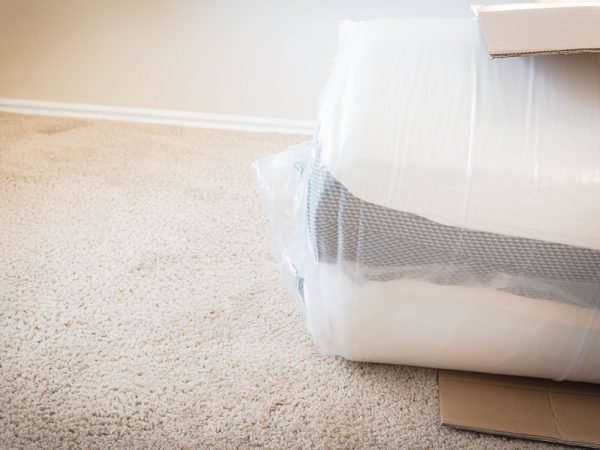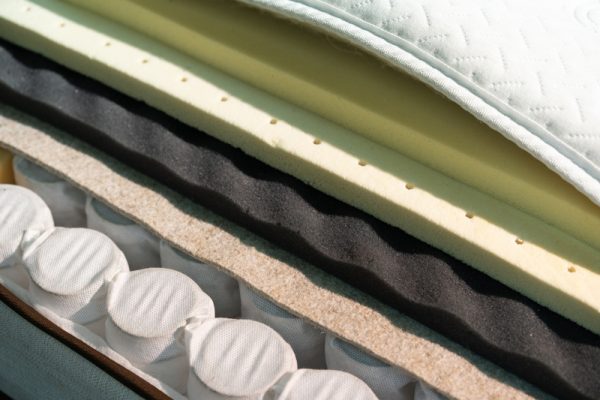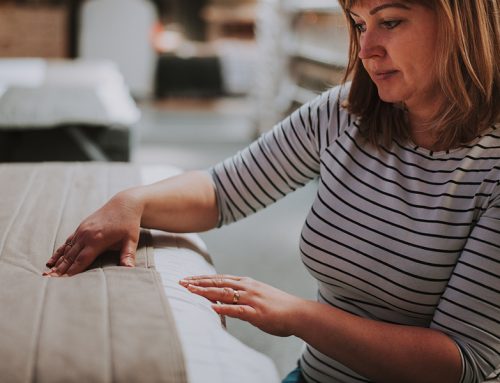 If you’ve opened a new mattress and catch a whiff of something funky or smelly—that’s not just your imagination. That may be because your mattress is potentially made with harmful chemicals. And unlike a new car smell, that new mattress smell is both unpleasant and potentially harmful to your health.
If you’ve opened a new mattress and catch a whiff of something funky or smelly—that’s not just your imagination. That may be because your mattress is potentially made with harmful chemicals. And unlike a new car smell, that new mattress smell is both unpleasant and potentially harmful to your health.
Before you get too worried, rest assured that not all mattresses release or carry these toxins and odors. But if your mattress does off-gas, there is a way to get rid of them or avoid them all together when purchasing a new mattress. Continue reading below to learn more about mattress off-gassing and how you can bring a safer mattress into your bedroom.
What is mattress off-gassing?
When you open a new mattress, off-gassing occurs as a result of the breakdown of volatile organic compounds (VOCs). When a mattress contains VOCs from petroleum based chemicals, toxic foas, synthetic fabrics and fire retardant barriers, these chemicals can “off-gas” and expose odor and toxins into the air that you breathe. This includes chlorofluorocarbons (CFCs), formaldehyde, benzene, and others.
But there won’t always be a chemical odor. At the end of the day, the levels of VOCs and smell will depend on the mattress because it often comes from the byproducts of the materials used. Memory foam mattresses tend to be well known for their off-gassing because VOCs are found most frequently in foam and adhesives that they’re made from.
How long does mattress off-gassing last?
Again, this depends on the mattress. The odor may last up to four weeks, yet the off-gassing of chemicals can linger and last for many years.
Is off-gassing dangerous?
The truth is, we have a lot of household items that are made from materials that off-gas. Think dryer sheets, cleaners, laser printers, non-stick pans, etc. We might also notice adverse, temporary reactions when we use any of these.
In short—mattress off-gassing isn’t dangerous or particularly toxic if the amount of chemicals used is low enough. That’s because some low amount of these chemicals is actually needed; for example, synthetic foams are flammable so they need fire retardant to meet certain safety standards. Furthermore, any reputable mattress company will also have to pass safety standards that certify them to be low in VOCs and free of toxic chemicals. It’s primarily the smell that is overbearing at first and what causes reported issues with breathing, headaches, nausea, eye or throat irritation, etc.
Experts even claim that low emission levels of VOCs are okay for us to breathe in every day and that it mostly becomes harmful for infants and young children. According to Dr. Kenneth Spaeth, “By virtue of their age and size, they have heightened vulnerability to potential toxic effects.” This also goes for people with asthma, breathing problems or sensitivity to chemicals.
Needless to say, mattress chemicals aren’t dangerous if there’s a minimal amount, but it’s not necessarily good for you either.
At the end of the day, off-gassing isn’t life threatening per say, but it could still be uncomfortable and create overall poor indoor air quality. And in this way, the effects of indoor air pollution can be volatile over time. The Minnesota Department of Health claims that inhaling low levels of VOCs over several years or a life, can increase the risks of cancer, central nervous system issues and liver or kidney damage.
But remember, that this also depends on the specific types of chemicals used and amount. Regardless though, it might just be wise to lessen that exposure as soon as possible and prevent any long-term issues.
How can I get rid of the new mattress smell?
As soon as you notice your new mattress has an unpleasant odor, there are some steps you can take to eliminate it quickly and effectively.
How to find a non-toxic mattress
You can pretty much avoid artificial chemicals off together if you buy a non-toxic mattress. Here are the main considerations to keep in mind while looking for one.
Find a mattress made of the right materials
 If you’re trying to avoid any likelihood of off-gassing, then it might suit you to buy an organic mattress. Organic mattresses will produce lower levels of gasses and are most commonly made of materials such as cotton, wool and/or latex. These natural fibers, like cotton and wool, are naturally flame resistant. As a result, they don’t need the fire retardant chemicals responsible for most mattress off-gassing.
If you’re trying to avoid any likelihood of off-gassing, then it might suit you to buy an organic mattress. Organic mattresses will produce lower levels of gasses and are most commonly made of materials such as cotton, wool and/or latex. These natural fibers, like cotton and wool, are naturally flame resistant. As a result, they don’t need the fire retardant chemicals responsible for most mattress off-gassing.
Beyond that, if you are committed to purchasing a memory foam mattress, look for plant-based memory foam which is made from naturally sourced ingredients like soybean and corn oil. Keep in mind that regular memory foam is made from petroleum-based derivatives so it’s going to have more traces of VOCs.
Look for third-party labels
The next best way to ensure you’re investing in a non-toxic mattress is by searching for one that is given the approval from a reliable third-party organization, specifically CertiPUR-US, GREENGUARD, Global Organic Textile Standard or Global Organic Latex Standard. These certifications all ensure that the materials used to make the mattress meet environmental and health standards.
Conclusion
Being informed about mattress off-gassing is necessary in order to be a more conscious buyer. Although the health risks related to the release of VOCs and off-gassing are still being studied, it has been known to create an unpleasant and irritable sensitivity to many that can last a while if not addressed. Now that you know what to do, you can avoid any off-gassing and enjoy your deep slumber, worry-free.




